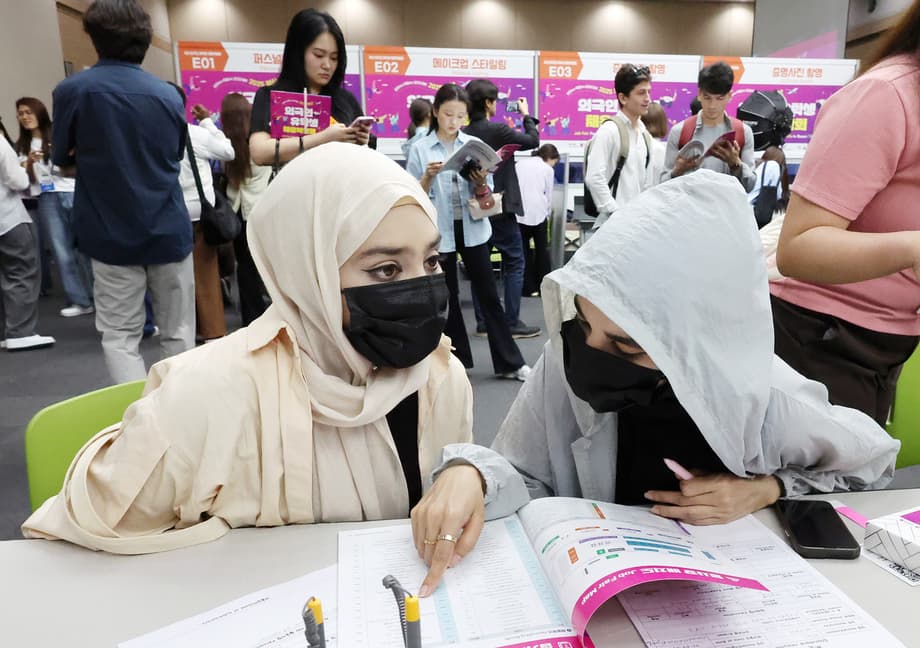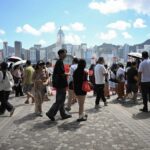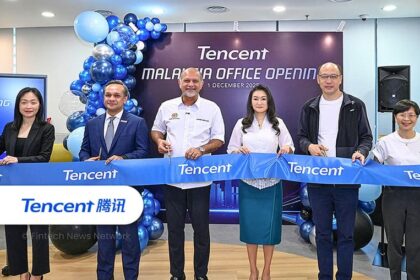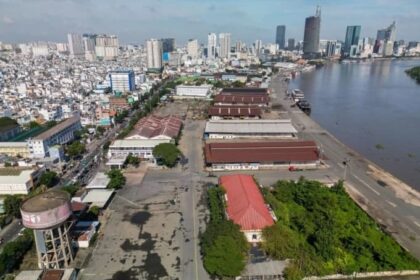A program built for speed meets a slow start
Countries across North America, Europe, and Asia are racing to hire the researchers and engineers who power artificial intelligence, advanced chips, batteries, and biotechnology. South Korea entered that race this spring with a new top tier visa intended to bring seasoned specialists and their families into the country with fewer barriers. Government data shows the program has produced only three recipients since April. One recipient is from Taiwan, one is a United States professional in the semiconductor sector, and another works in secondary batteries and is from Japan. The result is far from the original goal of attracting more than one thousand senior engineers from global tech companies, and it has sharpened debate about the design of the policy and the broader approach to foreign talent.
- A program built for speed meets a slow start
- What the top tier visa offers and requires
- Why uptake is so low
- How peer countries are courting the same workers
- Signals from Korean policymakers
- What a competitive redesign could include
- Universities and the K STAR pipeline
- What companies can do now
- What to Know
The visa offers F-2 long term residency for high skill applicants who meet three conditions: a master or doctoral degree from a top 100 global university, professional experience at a top 500 global company or a comparable research institute, and annual pay of at least 150 million won (about 106,000 dollars), which the government equates to roughly three times per capita gross national income. Benefits marketed with the visa include spousal work permission, online applications and renewals, priority immigration cards, and assistance with taxes, housing, and schooling. For now the program is limited to key industries such as semiconductors, displays, biotechnology, and batteries, with plans to expand to artificial intelligence, future mobility, robotics, defense, and academia. Early data, paired with a drop in holders of a separate advanced industry visa introduced in 2023, has fueled concern that South Korea is struggling to attract, and keep, the talent it needs.
What the top tier visa offers and requires
The top tier route aims to front load benefits that matter to senior specialists. F-2 residency grants broad work flexibility across employers, relative stability for families, and a credible path to permanent residence. Spouses can work, school placement can be more straightforward, and immigration processing is positioned to be faster and more predictable through online filing and priority services. The marketing pitch is clear: move to Korea, focus on research or product delivery, and bring your family under a program backed by high level ministries.
Eligibility is narrow by design. The degree requirement focuses on the upper tier of global rankings. The work history requirement favors experience at very large, brand name firms or at research institutions widely recognized by peers. The pay threshold, set near 150 million won, signals that the program seeks seasoned staff and inventors rather than recent graduates. Policymakers have said eligibility will widen to more sectors, including artificial intelligence, robotics, mobility, defense, and higher education roles such as professors and researchers.
The government’s intent is to pair generous residency benefits with rigorous entrance criteria to filter for impact hires. Industry leaders support the ambition, yet many point out structural constraints within Korean pay bands. Base pay at that level is often reserved for executives. Bonuses and allowances lift total compensation, but the program counts base salary. That gap alone can disqualify capable mid career engineers and scientists who would otherwise fit the spirit of the scheme.
Why uptake is so low
The salary floor is the single most frequently cited barrier. Few Korean firms set base salaries above 150 million won for non executive technical roles. Performance bonuses are common, and benefits such as housing stipends or education support can be generous, but those do not solve a base pay rule if the regulation is read strictly. The end result is that companies must either reclassify positions, compress internal pay bands, or pass on foreign candidates who cannot meet the threshold on paper.
The education and employer filters can also screen out strong talent. A top 100 global university standard excludes many world class programs in specific disciplines. Rankings shift each year and may underweight specialized schools in microelectronics, materials science, or applied AI. Requiring experience at one of the 500 largest companies disadvantages candidates from high performing startups or leading national labs that punch above their size. Those filters satisfy a desire for clarity, yet they can miss the very people the policy wants to reach.
There is a perception problem as well. Applicants compare processes across countries. Long document lists, limited clarity on review timelines, and uncertainty about what counts as an equivalent research institution can chill interest. Marketing has focused on sectors, yet scarce examples of successful cases make the path feel untested. At the same time, a separate visa created in 2023 to support advanced industry hiring has seen its active holders fall from 55 in its first year to 18 by August 2025, a signal that retention is as hard as initial recruitment.
Corporate pay structures and local norms
Senior engineers and researchers often move through tiered salary ladders in Korea. Titles connect to tenure, and compensation changes step by step. Shifting a mid career outsider into a higher base pay tier can break internal parity. Many firms answer with sign on bonuses or long term incentives instead of higher base pay. If a visa requires a specific base salary number, these common workarounds do not help, which leaves hiring managers with fewer options.
Retention headwinds
Even when companies overcome entry barriers, retention is a challenge. Some foreign specialists accept offers, contribute to major projects, then leave within two or three years for higher cash or stock packages in the United States or other markets. Pay is part of the story. Day to day life also matters. Foreign residents report friction with rental loans, access to credit cards, and navigating online public services that assume national ID histories and local language proficiency. Corporate culture, long schedules, and limited English support add pressure on families.
How peer countries are courting the same workers
Competing destinations are actively simplifying entry, lowering paperwork, and widening the funnel of eligible applicants. This is happening as the United States raises fees for its H-1B skilled worker category, making overseas alternatives more attractive in the near term.
Taiwan and the semiconductor pipeline
Taiwan has moved to make it easier for chipmakers to hire graduates of a wider range of universities. Graduates from top 500 global institutions can obtain work visas upon employment at a local semiconductor firm with minimal extra review. Taiwan also runs an open work permit known as the Gold Card, which provides residence and job flexibility for accomplished professionals across fields including technology. These tools align with a long term industrial policy anchored in chips and electronics.
United Kingdom and flexible entry
The United Kingdom’s High Potential Individual visa lets graduates of top 50 global universities live in the UK for a limited period while they look for jobs across advanced sectors. Many then move onto longer term routes such as Skilled Worker once they secure employment. The message is simple. Talented graduates can arrive first, explore options, and decide how to stay.
Singapore, Canada and the fast lane
Singapore’s Tech Pass targets top performers with clear track records in leadership or innovation, granting broad job flexibility. Canada’s Global Talent Stream is built around speed, with work permits processed in about two weeks for designated roles and employers that meet wage and labor conditions. Both models resonate with employers because they are predictable and fast.
Digital nomad options reset expectations
Several governments are using digital nomad programs to draw remote workers and their purchasing power. Japan launched a visa for remote earners from select countries, and the Czech Republic created a digital nomad path focused on information technology professionals. South Korea introduced a Workcation visa for remote employees of foreign companies, yet it carries strict income rules, a ban on earning income from Korean sources, and mandatory insurance. These programs do not replace high skill work visas, but they shape how mobile professionals judge user experience and openness.
Signals from Korean policymakers
Officials describe the top tier visa rollout as an early stage effort focused on a small set of strategic industries. They say eligibility will expand to artificial intelligence, mobility, robotics, defense, and academia, with more outreach and a larger pipeline of candidates. The goal is to keep the bar high while making the program understandable and visible.
City and national leaders are also discussing broader change. Seoul’s mayor has called for a more inclusive approach to immigration to address a shrinking workforce and has suggested giving local governments more room to tailor visas to local needs in sectors such as caregiving and elder services. Policy experts have urged a Korean version of the European Union’s Blue Card, which grants highly skilled non EU professionals a path to residence tied to job offers and salary thresholds that are set by sector and adjusted over time.
There is growing support for streamlined governance. Today, labor migration and settlement services are split across ministries and agencies. Researchers and educators who work with foreign residents argue for a unified immigration agency similar to models used in the United States and Australia to manage cross cutting tasks like integration, labor market matching, and long term settlement.
What a competitive redesign could include
Calibrate income thresholds. Set base pay thresholds by sector and by seniority, or allow employers to meet a combined compensation requirement that counts base salary plus guaranteed allowances. Publish sector specific salary floors that reflect Korean market data and update them annually.
Replace rigid lists with a points based grid. Award points for advanced degrees, patents, peer reviewed publications, open source contributions, leadership roles, and compensation relative to local medians. Accept experience at startups and research labs that meet output or funding criteria rather than only the largest 500 companies. Keep an accelerated track for marquee backgrounds, but provide equivalent routes for proven specialists from smaller institutions.
Guarantee speed and certainty. Offer a clear service standard, such as a decision within 30 days for complete filings, and assign case managers for priority sectors. Expand electronic signatures and document uploads so applicants can start work quickly. Publish decision reasons to lift confidence and help employers plan.
Support families and settlement from day one. Ensure spousal work permission arrives on the same timeline as the principal’s approval. Provide a welcome pack that covers banking, rental deposits, health enrollment, driver licensing, and school placement. Create local support centers in English and other widely used languages for the first three months after arrival.
Fix finance friction. Work with banks to create credit models for newcomers without Korean credit histories. Expand rental deposit guarantees and make housing loans available on terms comparable to citizens for eligible residents. Roll out secure digital identity tools that make public services usable without a long local history.
Use targeted tax and housing tools. Time limited tax reductions for designated science and engineering roles can offset relocation risk for candidates and help employers bridge pay gaps. Expand access to housing finance and consider employer matched subsidies in strategic clusters near research hubs.
Make retention a policy goal. Fund language training for families, create leadership programs for foreign managers, and co invest in upskilling programs so specialists can grow their careers in Korea. Provide re entry bonuses or fast track renewals for those who complete multi year projects.
Widen the sourcing net. Run dedicated campaigns in India and parts of Eastern Europe where there is depth in software, chips, and robotics. Partner with universities and research centers to identify rising stars and offer co funded relocation grants tied to multi year research or product goals.
Universities and the K STAR pipeline
Higher education is a major lever. The Study Korea 300K plan set a target to attract 300,000 international students by 2027 and has already pushed the foreign student population above 200,000. To convert graduates into hires, authorities have extended job seeker visas, opened faster routes to residency for top graduates, and expanded the range of jobs open to foreign alumni. A pilot known as K STAR, run with leading universities, allows presidents to recommend exceptional STEM graduates for F-2 status with a clear path to F-5 permanent residence after sustained performance. Officials aim to scale this model nationwide over the next couple of years so that research talent trained in Korea can stay and build careers.
Bridging study and work will matter as much as the headline visa. Co op placements, industry led capstone projects, and internships aligned with the new visa categories can shorten the gap between graduation and full time roles. Korea has also widened a job seeker route that allows highly educated candidates to remain in the country for up to two years while searching for work, and it is testing cultural and language programs for young visitors interested in internships. These complementary pathways enlarge the pool of candidates who can transition into the high skill stream.
What companies can do now
Employers do not need to wait for major reform to compete. Compensation can be restructured so that more of the package counts as base pay for visa purposes. Supplemental tools such as relocation grants, education assistance, and equity can still differentiate offers. International candidates respond to clarity, so publish salary bands, bonus cycles, and promotion criteria in the job posting.
Onboarding and daily life support are often decisive. A bilingual concierge for the first 90 days, a rental deposit guarantee, and help securing credit cards and mobile service can remove friction for families. Childcare guidance and school placement assistance, including access to international schools where needed, build confidence. Assign mentors who have worked abroad and can help new hires navigate culture and process.
Team culture shapes retention. Set realistic work hours, measure output instead of attendance, and offer flexible work where feasible for research and software roles. Provide English first collaboration tools and documentation. Map out a growth path inside the company, with rotation options across labs or product lines, so specialists see a multi year future in Korea.
What to Know
- Only three top tier visas have been issued since the April launch, far below the goal of more than one thousand senior hires.
- Eligibility requires a graduate degree from a top 100 university, experience at a top 500 company or equivalent institute, and base pay of at least 150 million won.
- Benefits include F-2 long term residency, spousal work permission, priority processing, and support with taxes, housing, and schooling.
- Officials plan to expand eligibility to AI, mobility, robotics, defense, professors, and researchers, and to step up promotion.
- A separate advanced industry visa created in 2023 has seen active holders fall to 18, raising retention concerns.
- Taiwan, the UK, Singapore, and Canada have opened simpler or faster routes that appeal to the same talent pool.
- Integration pain points, including access to credit, rental loans, and digital public services, push some hires to leave within two or three years.
- Policy ideas under discussion include sector based salary floors, a points based grid that credits achievements, faster decisions, and stronger family support.
- Universities are central to the pipeline; a K STAR pilot links top STEM graduates to F-2 status with a path to permanent residence.
- Employers can compete now by restructuring pay, removing daily life friction, and building bilingual, performance based team culture.












